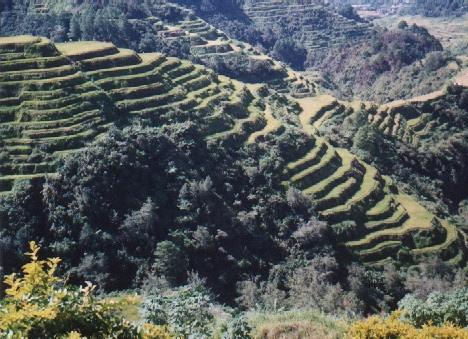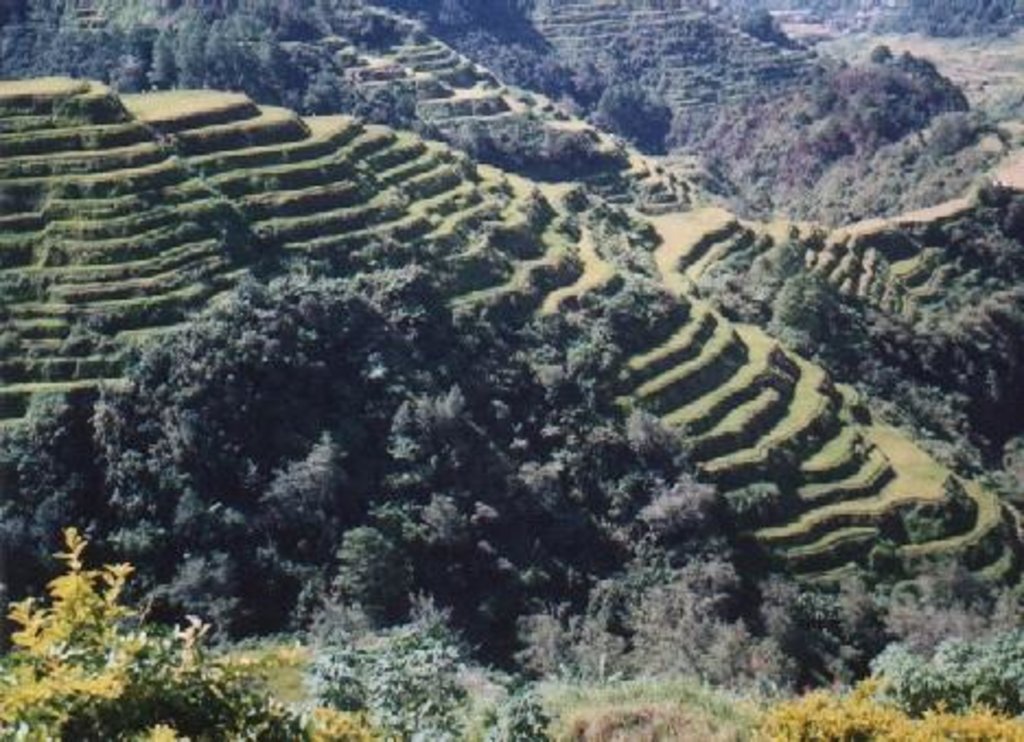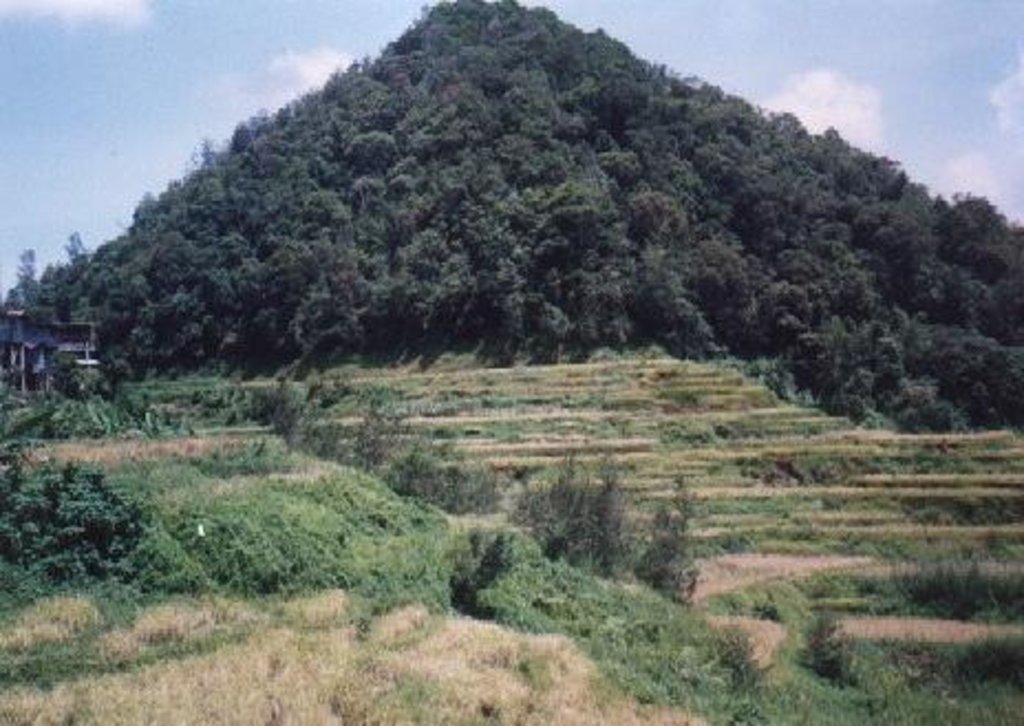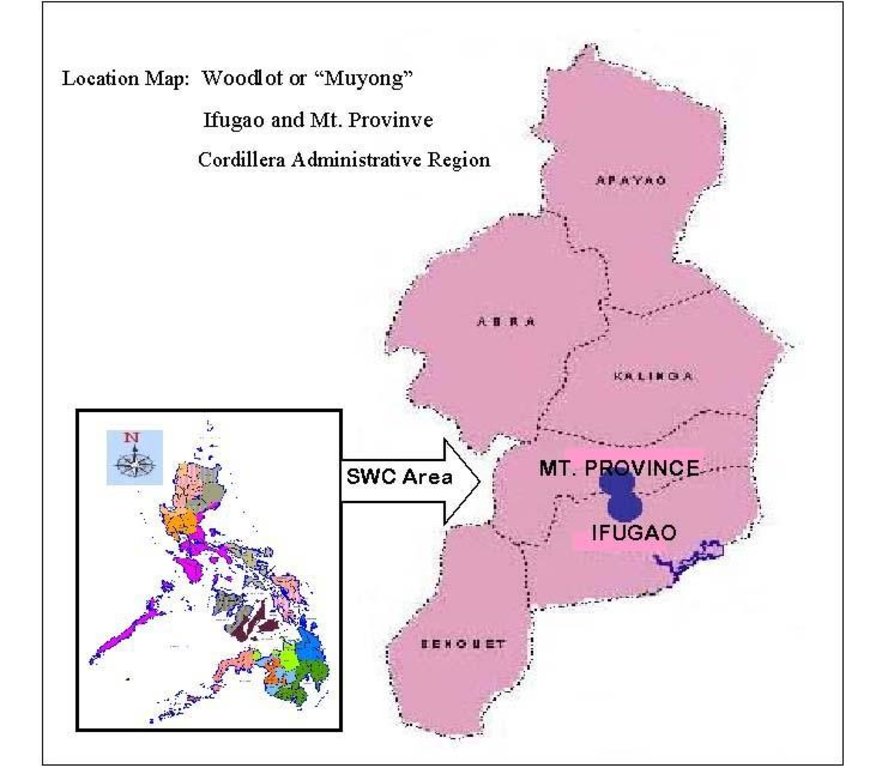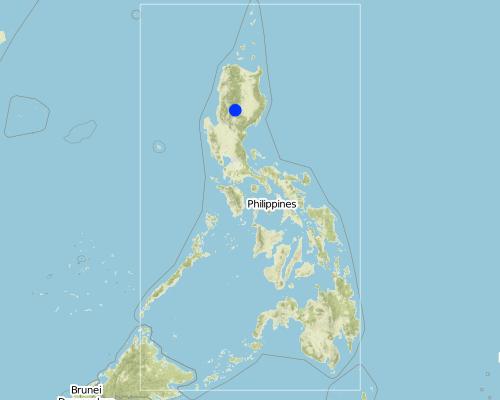Woodlot [Philippines]
- Creation:
- Update:
- Compiler: Unknown User
- Editor: Deborah Niggli
- Reviewer: Deborah Niggli
Muyong
approaches_1955 - Philippines
View sections
Expand all Collapse all1. General information
1.2 Contact details of resource persons and institutions involved in the assessment and documentation of the Approach
Name of project which facilitated the documentation/ evaluation of the Approach (if relevant)
Decision Support for Mainstreaming and Scaling out Sustainable Land Management (GEF-FAO / DS-SLM)1.3 Conditions regarding the use of data documented through WOCAT
When were the data compiled (in the field)?
15/01/2009
The compiler and key resource person(s) accept the conditions regarding the use of data documented through WOCAT:
Yes
2. Description of the SLM Approach
2.1 Short description of the Approach
Woodlot is a forest management approach which aims the to provide food, wood for fule, construction and material for woodcarving and to provide a steady source of water for the lower-hilly riceland area.
2.2 Detailed description of the Approach
Detailed description of the Approach:
Woodlot or 'muyong' as it is called in the local language is basically a timber management system. The harvesting of non-timber products like fruits and other benefits like the maintenance of a stable water supply are secondary objectives. Fuelwood and construction timber are the major products of woodlot. The usual size of woodlot is not more than one hectare and is individually owned. The approach is believed to have started at least a century ago. It began when it became apparent that sources of fuelwood near homes were becoming difficult to find. The approach also came about when people realized the need for accountability in the use and management of natural resources. The ancestors of the present-day owner of the woodlots were influenced by the relationship of a reliable and steady water supply and the existence of forest. Woodlots normally evolved from swidden fields. The owners encouraged the growth of prefered species either by direct seeding or by transplanting seedlings uprooted fron nearby forest.
Present practices involve the growing of introduced-fast growing species such as mahogany (Switeria macrophylla) and gmelina (Gmelina arborea). Rattan a valuable material for the furniture industry is also raised in the woodlot. Medicinal herbs are also gathered. Mushrooms and nuts are also grown. Woodlot is an approach unique to the indigenous tribes of the Cordillera. Boundaries, tenures and disputes are settled based on local traditions and beliefs. Common disputes arise from illegal gathering of fruit products. Transfer of ownership is upon the discretion of parents and only to married children. Inheritance of a woodlot denotes the handling down of authority and responsibility over the family. Woodlot or 'muyong'has been hailed as one of the nine successful 'Traditional Forest Related Knowledge' (TFRK). In terms of sophistication and social organization, woodlot is no equal among the approaches being practiced by the different ethnic groups in the country.
2.3 Photos of the Approach
2.5 Country/ region/ locations where the Approach has been applied
Country:
Philippines
Region/ State/ Province:
Mountain Province and Ifugao
Map
×2.6 Dates of initiation and termination of the Approach
If precise year is not known, indicate approximate date when the Approach was initiated:
more than 50 years ago (traditional)
2.7 Type of Approach
- traditional/ indigenous
2.8 Main aims/ objectives of the Approach
Sustainable use of forest resources by employing traditional beliefs, customs and traditions. Promote ecological balance.
2.9 Conditions enabling or hindering implementation of the Technology/ Technologies applied under the Approach
legal framework (land tenure, land and water use rights)
- enabling
Regalian doctrine which says that all public lands are owned by the state. -> Regular maintenance of a portion of the forest by weeding, removing of vines and undesirable species.
knowledge about SLM, access to technical support
- enabling
Lack of knowledge on the proper care and maintenance of forest resources. -> Provisions of traditional skills, customs and beliefs in the care and maintenance.
3. Participation and roles of stakeholders involved
3.1 Stakeholders involved in the Approach and their roles
- local land users/ local communities
Specific ethnic groups: The indigenous tribes in the Cordillera and Caraballo mountain ranges in Northern Luzon.
3.2 Involvement of local land users/ local communities in the different phases of the Approach
| Involvement of local land users/ local communities | Specify who was involved and describe activities | |
|---|---|---|
| initiation/ motivation | passive | |
| planning | passive | |
| implementation | passive | |
| monitoring/ evaluation | none |
3.4 Decision-making on the selection of SLM Technology/ Technologies
Specify who decided on the selection of the Technology/ Technologies to be implemented:
- land users alone (self-initiative)
Explain:
Land user driven (bottom-up). Indigenous practice. Consultation among clan members and between clan.
Specify on what basis decisions were made:
- personal experience and opinions (undocumented)
4. Technical support, capacity building, and knowledge management
4.1 Capacity building/ training
Was training provided to land users/ other stakeholders?
Yes
Specify who was trained:
- land users
Form of training:
- on-the-job
Subjects covered:
Informal training among family members on the management of forest for sustainable use.
4.2 Advisory service
Do land users have access to an advisory service?
Yes
Specify whether advisory service is provided:
- on land users' fields
Describe/ comments:
Environmental protection particularly watershed management is a top priority of the government and NGO's. The 'woodlot' approach of watershed protection is regarded as a perfect example of forest management being employed by indigenous people.
4.3 Institution strengthening (organizational development)
Have institutions been established or strengthened through the Approach?
- yes, moderately
Specify the level(s) at which institutions have been strengthened or established:
- local
Describe institution, roles and responsibilities, members, etc.
by promoting aesthetics
4.4 Monitoring and evaluation
Is monitoring and evaluation part of the Approach?
Yes
If yes, is this documentation intended to be used for monitoring and evaluation?
No
4.5 Research
Was research part of the Approach?
Yes
Specify topics:
- sociology
- economics / marketing
- ecology
- technology
Give further details and indicate who did the research:
Researches on traditional forest knowledge of different ethnic groups.
5. Financing and external material support
5.1 Annual budget for the SLM component of the Approach
Comments (e.g. main sources of funding/ major donors):
land users 100%
5.2 Financial/ material support provided to land users
Did land users receive financial/ material support for implementing the Technology/ Technologies?
Yes
5.3 Subsidies for specific inputs (including labour)
- equipment
| Specify which inputs were subsidised | To which extent | Specify subsidies |
|---|---|---|
| tools | ||
- agricultural
| Specify which inputs were subsidised | To which extent | Specify subsidies |
|---|---|---|
| seeds | ||
| seedlings | ||
If labour by land users was a substantial input, was it:
- voluntary
5.4 Credit
Was credit provided under the Approach for SLM activities?
No
5.5 Other incentives or instruments
Were other incentives or instruments used to promote implementation of SLM Technologies?
No
6. Impact analysis and concluding statements
6.1 Impacts of the Approach
Did the Approach mobilize/ improve access to financial resources for SLM implementation?
- No
- Yes, little
- Yes, moderately
- Yes, greatly
The approach contributed to effective water conservation to sustain the rice terraces
Did the Approach improve issues of land tenure/ user rights that hindered implementation of SLM Technologies?
- No
- Yes, little
- Yes, moderately
- Yes, greatly
The land use right (no land titles) is being respected and honored and the approach fits well in the over-all scheme. The land use right is well respected in the communities. Conflicts are peacefully resolve through compromises and agreements.
Did other land users / projects adopt the Approach?
- No
- Yes, little
- Yes, moderately
- Yes, greatly
The concept is being adopted in other areas with different degrees of success. It is being talked about as a classic example of resource management.
6.3 Sustainability of Approach activities
Can the land users sustain what has been implemented through the Approach (without external support)?
- yes
6.4 Strengths/ advantages of the Approach
| Strengths/ advantages/ opportunities in the land user’s view |
|---|
| Strong respect for customs/traditions in the management of resources. |
| Strong backing from local government units (LGU's) |
| Strengths/ advantages/ opportunities in the compiler’s or other key resource person’s view |
|---|
| Respect for land users rights even though there is no legal documents to hold on for the land |
| Continous replanting |
| Strong resolve of the land users on the need for sustainability. |
6.5 Weaknesses/ disadvantages of the Approach and ways of overcoming them
| Weaknesses/ disadvantages/ risks in the land user’s view | How can they be overcome? |
|---|---|
| Woodlot can be a sanctuary for pests for the nearby rice fields. | Maintenance and cleanliness. |
| Weaknesses/ disadvantages/ risks in the compiler’s or other key resource person’s view | How can they be overcome? |
|---|---|
| Not all members of the community is involved/benefited. | Wider involvement using other areas within the vicinity of the community. |
| Tendency for the woodlot to be commercialized and over-exploited. | Carrying capacity of the woodlot should be determined. |
7. References and links
7.1 Methods/ sources of information
- field visits, field surveys
- interviews with land users
7.2 References to available publications
Title, author, year, ISBN:
Report on the Study of Traditional Forest Related Knowledge of the Ifugao and Bontoc Ethnic Groups in the Cordillera Region of the Philippines
Available from where? Costs?
Department of Environment and Natural Resources, Quezon City
Title, author, year, ISBN:
Environmental and Socio-Economic Impact, Analysis of an Indigenous and Introduced Agroforestry Systems in Luzon.
Available from where? Costs?
University of the Philippines Los Banos Library, Los Banos, Laguna
Links and modules
Expand all Collapse allLinks
No links
Modules
No modules


